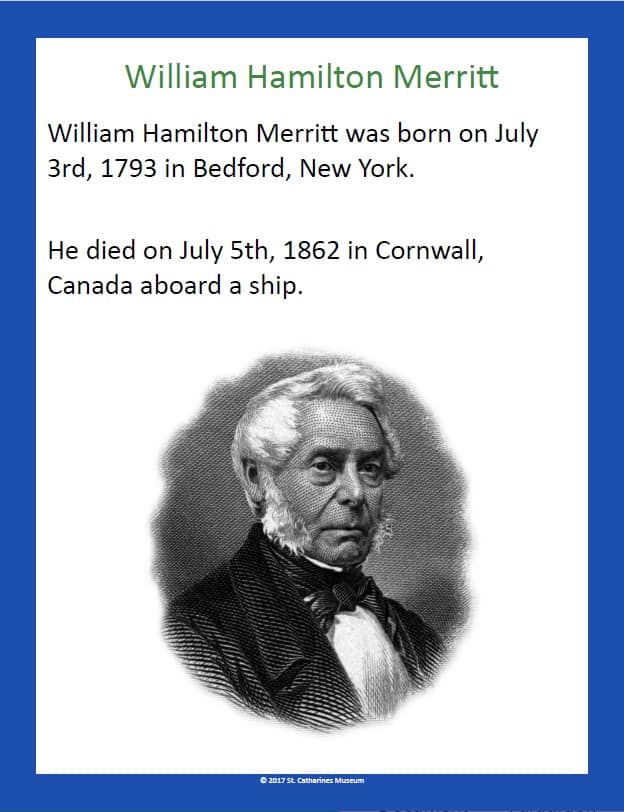That statue watching the Burgoyne Bridge in St. Catharines was a POW
Published August 8, 2022 at 12:37 pm

The 20-foot-high statue facing west as if standing guard over the Burgoyne Bridge in St. Catharines, who is that exactly?
Hundreds of cars past the statue every day with nary a clue about who it’s representing and why? A bridge builder, perhaps? A highway enthusiast? After all, the bridge, unmistakable for its bright white colour and unique design does, in fact, run over Highway 406.
It turns out that the gentleman in question – William Hamilton Merritt – was an early proponent of the Welland Canal and also became a POW for the invading American troops in the War of 1812. Just into his 20s, he was captured in the Battle of Lundy’s Lane at Niagara Falls in July 1814, about six months before the war ended.
Born in Bedford, NY in July 1793, his family moved to what was then known as Upper Canada where he grew up in the Niagara area with the farm owning a farm very close to the 12 Mile Creek. That also explains the placement of his statue as the Burgoyne Bridge also runs over that river.
After he was released as a POW from a Massachusetts camp in March 1815, he made his way back to Canada (with a new bride, Catharine Prendergast, in tow) and purchased 25 acres of land at Shipman’s Corners (a St. Catharines community), where he built a house and a store.
He also sold goods in what is now Niagara-on-the-Lake and Queenston on the Canada/US border. He then bought a rundown sawmill on the Twelve Mile Creek, and added a grist mill and a store. His property had a salt spring so Merritt began to manufacture salt at a time when it was still expensive.
The water levels in the creek varied considerably, creating difficulties for Merritt and his mill. In 1818, when the flow was especially low, Merritt pursued the idea of bringing water to his mills from the Chippawa Creek. That was the seed, creating the idea behind the eventual Welland Canal.
Boat travel from Lake Erie to Lake Ontario was impossible due to Niagara Falls so the idea was the Welland Canal connecting the lakes would be a formidable bypass.
Since the Ontario government at the time refused to pay for the canal, considerable private investment was raised and the construction which began on November 30, 1824, finished exactly five years later, on November 30, 1829. Merritt was a passenger on the first ship that made the entire transit, departing from Lake Ontario on November 30, 1829, and arriving at Buffalo, New York three days later.
Merritt would spent the last 30 years of his life starting from 1832 as a MLA (Member of the Legislative Assembly – what MPPs were called in those days).
Ironically, he died in 1862 aboard a ship in the Cornwall Canal and is buried at the Victoria Lawn cemetery in St. Catharines.


William Hamilton Merritt (July 3, 1793 – July 5, 1862) is the man in the statue that faces westbound at the eastern end of the Burgoyne Bridge in St. Catharines.





